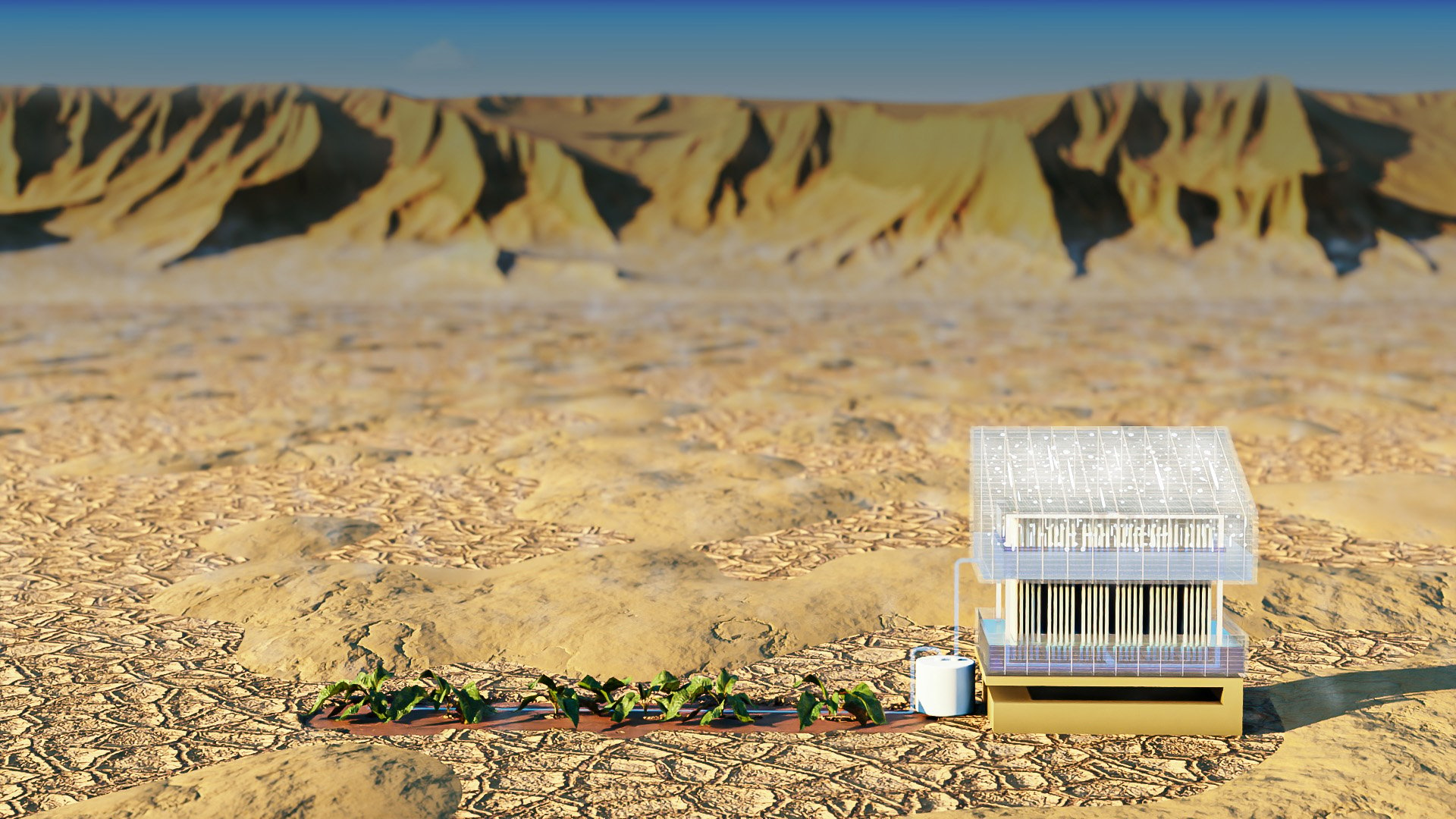A solar-powered water harvester developed by KAUST researchers can extract 2-3 liters of water per day during the summer months. Credit: 2024 KAUST; Heno Hwang
A new solar-powered water harvester developed by KAUST uses a self-sustaining cycle inspired by natural plant processes to efficiently extract water from the air, requiring no manual maintenance and promising affordable water solutions for arid regions.
Even in the world’s arid regions, there is usually some moisture in the air. This moisture has the potential to provide essential water for drinking and irrigation. However, extracting water from the air is challenging. KAUST researchers have developed a new technology that can consistently extract liters of water from thin air each day without requiring regular manual maintenance.
Harvesting water from air is not a new idea, or even a new technology, but existing solar-powered systems are clunky.
Solar-powered harvesters work in a two-stage cycle. An absorbent material first captures water from the air, and once it is saturated, the system is sealed and heated with sunlight to extract the captured water. Alternating between the two stages requires either manual labor or a switching system, which adds complexity and cost. The new harvester developed at KAUST requires neither — it passively alternates between the two stages so it can cycle continuously without intervention.
Innovative Design Inspired by Nature
“Our initial inspiration came from observing natural processes: specifically how plants efficiently transport water from their roots to their leaves through specialized structures,” says postdoc Kaijie Yang, who led the study.
This gave the team the key idea for their new system. “In our system, mass transport bridges play a crucial role as a connection between the ‘open part’ for atmospheric water capture and the ‘closed part’ for freshwater generation,” explains Yang.
The mass transport bridges are a collection of vertical microchannels filled with a salt solution that absorbs water. The water-rich salt solution is pulled up the channel by the same capillary action that pulls water up plant stems, and then the concentrated salt solution diffuses back down to collect more water. “By optimizing the transport of mass and heat within the system, we enhanced its efficiency and effectiveness,” says Tingting Pan, another postdoc who worked on the project.
During testing the system in DOI: 10.1038/s41467-024-50715-0





















Discussion about this post